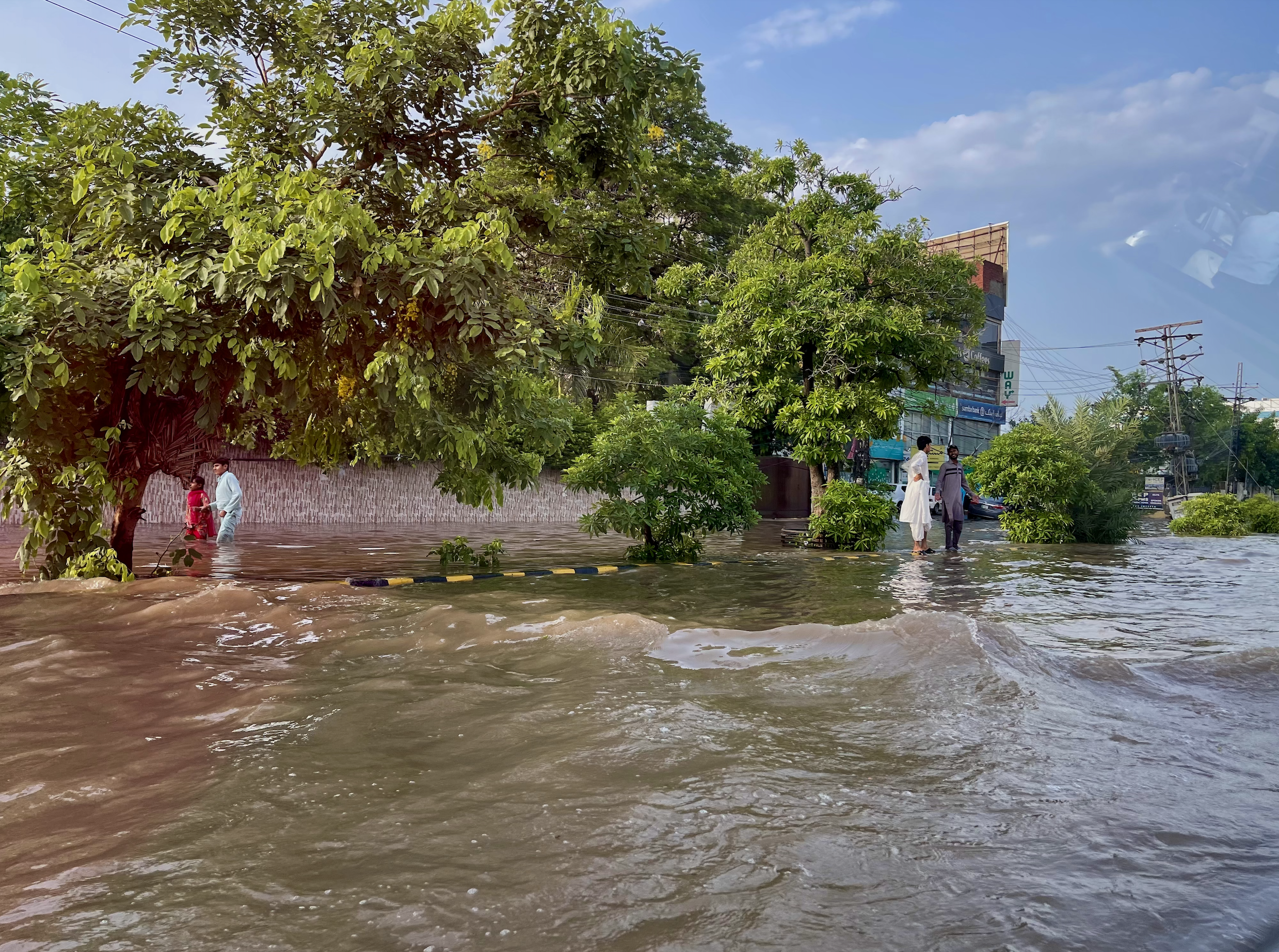
It rains, it floods, and we lose our homes. This is the reality of all Pakistani households living in Christian and Hindu religious minority areas.
“We had so much water in our house that we had to put everything on the roof. It took 10 days for the water to clear up, and when it did our home was ruined,” recalled Bushra Zulfiqar, a 49-year-old domestic worker, in her native language of Urdu. “[My home] had to be reconstructed,” she added.
Zulfiqar, alongside her family of five, lived in the Christian-majority area of Greentown in Lahore, Pakistan. After the flooding, her home was still salvageable, but the surrounding mud houses of Christian workers were completely destroyed and shut down. What was surprising to hear was how families living in pakkay ghar, or houses made from cement, were not spared after every monsoon rainfall.

As a nonprofit journalism organization, we depend on your support to fund more than 170 reporting projects every year on critical global and local issues. Donate any amount today to become a Pulitzer Center Champion and receive exclusive benefits!
“Cement houses are sturdier, but cracks start appearing in them after it rains. The risk of the whole building collapsing was much too high, so the houses had to be constructed all over again,” Zulfiqar said.
The problem would not end there. Once the rain stopped, the complications of the city’s drainage would come to light. With no proper drainage system in place, the country has to resort to temporary solutions.
“We cannot do anything after the flooding, and we must wait out for the water to sweep away. Sometimes WASA [Water and Sanitation Agency] employees come to help drain the water,” Zulfiqar said.
WASA employees drain the water by filling it in tankers and disposing it off in a far off location; a short-term solution to a long-term problem. Stormwater is supposed to be disposed of through a separate drainage system to prevent cities from flooding, but in Pakistan, there is no separate drainage for stormwater.
“We just have one sewage system through which storm water is also released—that is why when rainfall comes, floods come,” explained civil engineer Naeem Jamsheed Ali, who has worked on numerous housing and drainage projects throughout the city of Lahore.
Since the sewage lines are already carrying the whole city’s waste and are badly maintained, they are unable to sustain the pressure of the incoming rainwater. This ultimately leads to the flooding of the city.
“Sewage lines require day-to-day maintenance, which is not being done,” Ali said, further explaining how even the metropolitan cities of Pakistan flood up, so slum areas really do not stand a chance.
The problem is much worse in Karachi, an urbanized coastal city in Pakistan. Rafay Alam, an environmental lawyer, further elaborated on how injustice in Pakistan happens based on affluence and, even though this issue pertains to the whole nation, only the overlooked religious minority areas suffer its consequences. One such example is the Defence Housing Authority (DHA), a newly constructed opulent area of Karachi. The society houses double and triple-story homes but remains constructed on poorly built drainage lines.
“In DHA there are areas where the sewage lines go nowhere and they block up and flood anywhere in Karachi,” Alam said, further adding that this choking of the city is always directed towards lower-class communities living near the Nallah’s (brooks that act as storm water drains) and consequently are the ones at the receiving end of the crisis.
“These blockages are what caused the flooding in 2020. The knee-jerk response was unfair because [the Sindh government] are focusing on the poor communities who live on one storm water drain,” added Alam as he explained how communities living in poor areas, such as Gujjar Nallah, had their homes demolished and were left with nowhere to go.
These interviews opened my eyes as they explained the root cause of the problem. I started out by reporting on the problems faced by overlooked communities during flooding, but I ended up wanting to investigate a much larger question: Why does Pakistan flood every year?
The complications of the drainage system or the nonexistence of it, in some cases, made me understand how the country not only floods each year but also wastes precious storm water. A country that is already struggling with producing enough electricity should take advantage of the God-given annual rainfall but instead is wasting it by letting it flow alongside untreated sewage water.
The Federal Budget Report 2023-2024 reported that the citizens of Pakistan paid Pakistani Ruppee (PKR) 9,415 billion in taxes; however, only PKR 950 billion was allocated to the development sector (Federal PSDP). Within this allocation, the amount actually spent on developmental projects throughout the year remains uncertain.
Pakistan does have the capital to better itself, but due to allegations of corrupt leaders and political instability, the accountability of funds is not a priority for the government. And so the cycle repeats and the country floods every year.














